6 Major Ports of North Korea
Situated in the Northern portion of the Korean Peninsula, North Korea has been a closed and centralised economy since the 90s. The country faces the Yellow Sea and the Sea of Japan on its western and eastern borders, but apart from trade with neighbours China and Russia, its international maritime trade is quite limited, shaped by political factors.
The country has suffered the ravages of the Korean war and instilled various reforms modelled on the Soviet model of five-year plans, however, they proved unsuccessful. Defined as a socialist state, North Korea suffers from comparatively low energy supplies and dilapidated infrastructure.
The Industrial sector is the major contributor to the GDP with the important industries being machine building, military equipment, chemicals, mining, iron ore and coal production. The agricultural sector was devastated by famine in the ’90s and could not completely recover due to fertiliser and equipment shortages. Commercial fishing and aquaculture are extensive and tourism is being promoted to earn valuable foreign exchange.
The international trade and shipping sector is expanding slowly with some improvements such as the opening of special economic zones. China is the major trade partner accounting for around 84% of international trade followed by Russia. The country has been under UN sanctions since 2017, to dissuade it from developing nuclear weapons and ballistic missiles. The US imposed additional blockades on its shipping, ports and manufacturing.
Thus, North Korea continues to have a fraught relationship with the world that has limited its economic growth and progress. The country has 17 ports, however, they do not function at their maximum capacity and need modernization and infrastructural development to meet the global standards.
In this article, let us have a look at some of the major ports of North Korea.
Port of Nampo
The largest and busiest port of North Korea, Nampo port is located on the river Taedong on the country’s western coastline. Its convenient geographical location near the capital city of Pyongyang makes it an important port facility handling the majority of the export trade. It is also in close proximity to the port of Haeju and Incheon port of South Korea. It is also linked to Pyongyang through railways, and by a recently constructed motorway.
It handles bulk cargo, mostly coal, iron ore, grains, limited containerised cargo and is visited by more than 70 ships annually. Opened to foreign trade in 1897, it is directly operated and managed by the North Korean Government. The port’s infrastructural facilities developed after the Korean War ended and the government made increased investments in the region with the establishment of industries.
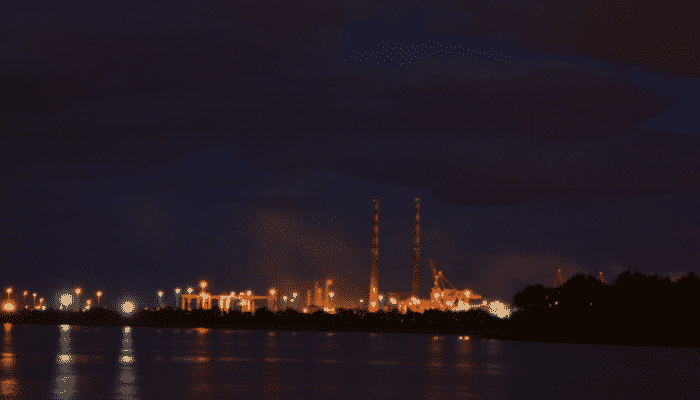
The opening of Nampo for export has significantly contributed to the development of the nation’s economy. Apart from being a commercial port facility, it is also a fishing hub and a manufacturing depot, home to crucial industries such as ship construction, automobile and steel manufacturing, whose finished products are exported from this port. Other smaller factories and manufacturing units such as smelter complex and glass factories including units producing sea salt and aquatic goods are also located near the port.
The port is naturally well-sheltered, with an entrance channel depth of 6.5 to 7.4 m and offers anchorage of 11 to 12 m. The alongside depth of the cargo pier is 7 to 8.5 m while the depth of the oil terminal is estimated to be 3 m. Nampo port can accommodate ships weighing around 20,000 DWT but is frozen during winters.
Nampo port has seen much development compared to other ports. An 8 km long sea wall with three lock chambers was constructed at the port so ships up to 50,000 DWT could pass through. New oil storage tanks were built at the port in 2018, measuring 82 to 105 feet. About 27 storage facilities were constructed at the port since 2018.
Port of Najin
The port of Najin lies on the north-eastern shore of North Korea, just 30 km from the Russian border. The major export commodity is coal, and mostly Russian coal is exported through this port. Other export items include dried seaweed, seafood like cuttlefish, mackerel crab, sea cucumber etc.
The port harbour has a crescent shape and its depth ranges from 10.7 to 21.2 m. Three breakwaters are situated in the port interior. Najin port is visited by passenger vessels, naval ships, fishing boats, and cargo ships. Some of these smaller cargo ships transport shipments of lumber, bricks, cement, tiles, and steel used by the Najin shipyard.
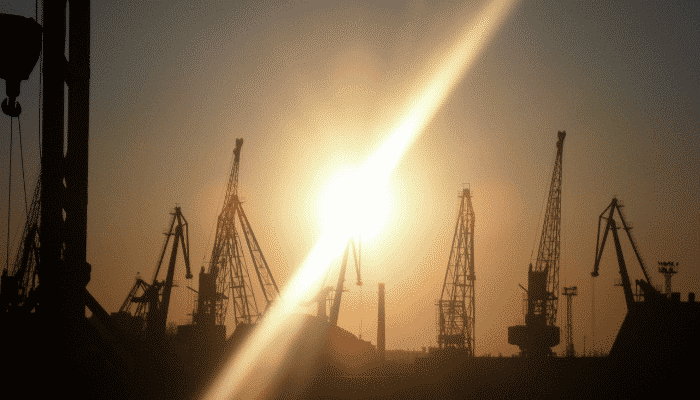
Najin port comprises three cargo piers and two fishing ports. The Main fishing port is operated by the Najin shipyard while the Anjuri fishing facility is under the jurisdiction of the Najin fishing station. Both these fishing ports have been expanded to accommodate bigger vessels.
Pier 1 can accommodate smaller vessels weighing around 100 tonnes, usually fishing boats. Pier 2 can handle ships weighing not more than 1000 tonnes such as passenger vessels, tug boats and naval ships. Pier 3 is the biggest and takes vessels weighing up to 2000 tonnes like cargo ships.
These three docks have limited storage facilities and pier 3 has a cold storage facility. The port also has four warehouse buildings, 6 cranes manufactured by the Najin Shipyard and three storage tanks. Since the imposition of sanctions on North Korean ports by the US in 2017, Najin port’s trade has declined substantially.
Port of Chongjin
Located on the northern shore of Cheongjin Hang, Chongjin port mainly handles trade between Japan, Manchuria and other north Korean port facilities. It exports iron, steel and steel products, fish and bean oil.
The Chongjin port is one of the biggest North Korean ports, having more than 30 berths with a handling capacity of more than 10,000 tonnes. Vessels from this port frequent the Maizuru port and Niigata port in Kyoto, Japan.
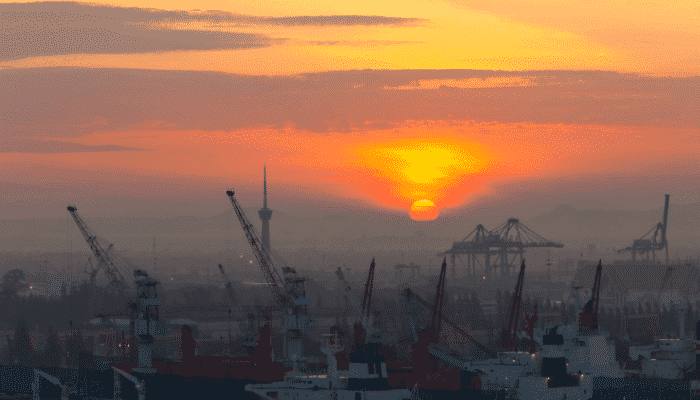
The city of Chongjin is an important steel and fibre manufacturing centre and is known as the hub of the ferrous metal industries in North Korea. Huge steel plants and shipyards can be found in Chongjin. This port was constructed during the Japanese occupation of Korea and was opened for international trade in 1907. The construction of Chongjin port aided the Japanese to transport timber, and forest products, acquired from North Korean forests and Manchuria. It was also used for the transportation of fishery products.
The port is naturally well-sheltered and is divided into western and eastern ports. The former is used by the Kim Chek iron and steel complex while the latter receives trading vessels. It is connected to Russia via the railway network and receives cargo from the neighbour. Some Chinese shipping companies are also located at the port.
Port of Rajin/Rason
Rason or Rajin port lies in the Sea of Japan in the Northern Pacific Ocean. It is situated in the Rason special economic zone in North Korea. The cities of Rajin-Sonbong were renamed Rason in 2000 but the port is now called Rajin port. It is an ice-free port that has developed in recent times with the financial aid of China and Russia, which have invested in port development and infrastructure.
Rajin port handles shipments of diverse cargo such as coal, cement, fertiliser, cotton, steel and wood. The port covers an area of 3,80,000 m2, with its three piers stretching 2,515 m. It comprises 3 piers and 15 berths and can accommodate ships weighing 5000 to 50,000 tonnes. It is the deepest port in the Tumen river region with a depth of 12 m.
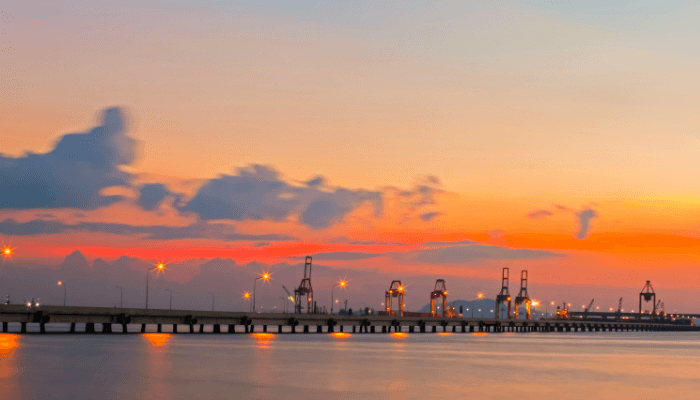
Pier 1 is 970 m long and can accommodate five ships weighing up to 10,000 tonnes. Its annual cargo handling capacity is 500,000 tonnes. The second pier spans 960 m, with a cargo capacity of 1,400,000 tonnes every year. Pier 3 measures 580 m and can handle 500,000 tonnes of cargo annually. It has a docking capacity of 15 ships with an annual storage capacity of 100,000 tonnes.
Rajin Port is of great significance for China and Russia and is strategically located. However, it does not operate at its full capacity due to international sanctions on North Korea. The port has tremendous potential for growth as it is the only ice-free facility in the region.
Port of Haeju
The city of Haeju is located in southwestern North Korea and is home to the Port of Haeju, which lies on the Haeju bay, near the Yellow Sea. It is the only port on the western coastline that remains ice-free in winters. This port has been used since ancient times for trade with China and in the 1900s it developed as an important centre of trade in agricultural and marine goods.
It has a natural harbour and the water depth in the entrance channel is 1.9 to 3 m while the cargo pier depth is 5 to 6 m. It is well connected with roadways and railways and consists of wharves for loading and unloading operations. The port has limited equipment such as lifts with a maximum capacity of 30 tonnes and 2 mobile cranes and also floating cranes. Ship repairs are restricted to smaller vessels arriving at the port.
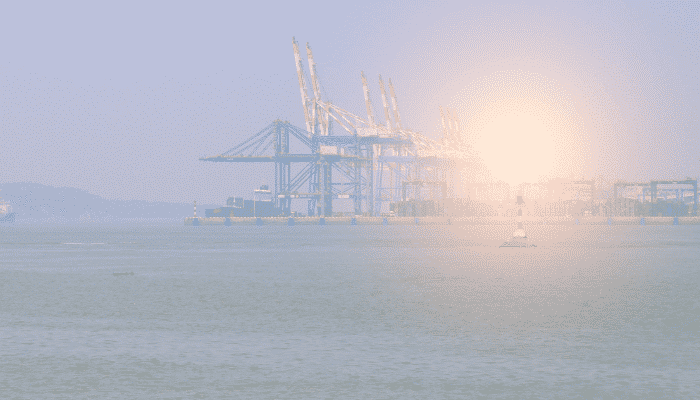
Numerous smelting industries, agricultural equipment units, glass manufacturing, cement factories, and chemical plants are situated near the port, whose finished products are exported by Haeju port. However, since the port is located in the south, far from power plants concentrated in the north, it suffers from a lack of power supplies. There is also a fishing port in Haeju city apart from the main port.
Port of Wonsan
Wonsan port lies on the coast of the Sea of Japan and is about 130 km from Pyongyang. It has the best natural harbour along the eastern North Korean shoreline. During ancient times, the port was known as a marketing, and warehousing centre and was transformed into a commercial port in the 1880s. Later it was integrated into the national railway network, linking it directly to the capital city.
It is one of the most important ports for North Korea that exports plumbago, gold and cattle while its imports comprise rice, wheat flour, salt and mineral oils. It is a medium-sized, well-sheltered port and can accommodate ships more than 500 m long.
The entrance channel to the port is 12.5 to 13 m deep, while the depth of the cargo piers is 5 to 6.7 m. The depth of the oil terminal is around 9 m.
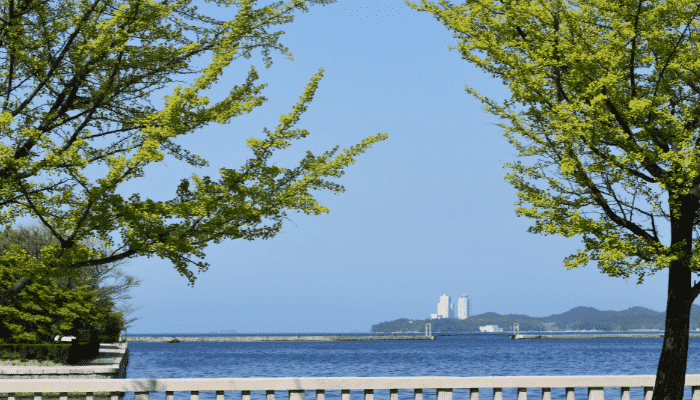
Port equipment is few and comprises 2 -24 tonne lifts and 50-tonne lifts including 2 mobile and floating cranes. A ship repair facility is also offered at the port’s shipyard.
Numerous industries like shipbuilding units, railway works, chemical plants and textile manufacturing are situated near the port whose raw material supplies arrive at Wonsan port. The international trade of this port has been fairly limited to only China and Russia. Apart from being a port city, Wonsan is also a famous tourist destination, known for its white-sand beaches and multi-cuisine restaurants.
Conclusion
Ports in North Korea suffer from logistic incapabilities, technological redundancies, lower power supplies and decreased productivity due to the imposition of international sanctions. The shipping sector of North Korea needs to be revitalised through dynamic reforms and increased foreign investments. However, this would be possible only if the economic structure of the country is altered for improved economic growth.
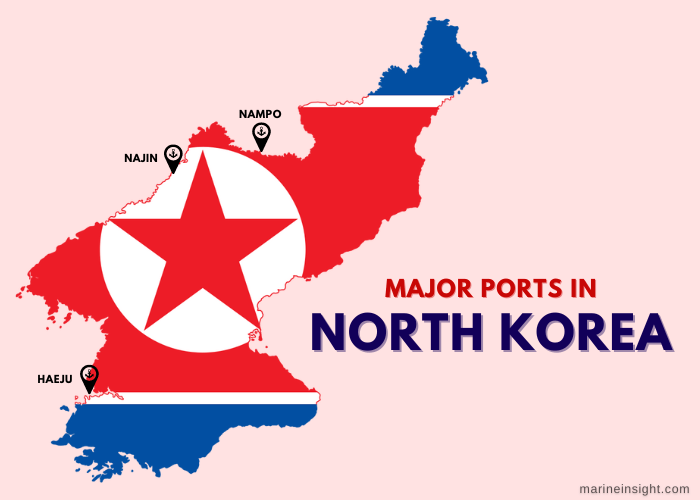
You might also like to read:
- 5 Major Ports Of Vietnam
- 5 Major Ports In Japan
- 4 Major Ports In Cambodia
- 10 Major Ports In China
- Top 10 Busiest Ports In The World
Disclaimer :
The information contained in this website is for general information purposes only. While we endeavour to keep the information up to date and correct, we make no representations or warranties of any kind, express or implied, about the completeness, accuracy, reliability, suitability or availability with respect to the website or the information, products, services, or related graphics contained on the website for any purpose. Any reliance you place on such information is therefore strictly at your own risk.
In no event will we be liable for any loss or damage including without limitation, indirect or consequential loss or damage, or any loss or damage whatsoever arising from loss of data or profits arising out of, or in connection with, the use of this website.
Do you have info to share with us ? Suggest a correction
Disclaimer :
The information contained in this website is for general information purposes only. While we endeavour to keep the information up to date and correct, we make no representations or warranties of any kind, express or implied, about the completeness, accuracy, reliability, suitability or availability with respect to the website or the information, products, services, or related graphics contained on the website for any purpose. Any reliance you place on such information is therefore strictly at your own risk.
In no event will we be liable for any loss or damage including without limitation, indirect or consequential loss or damage, or any loss or damage whatsoever arising from loss of data or profits arising out of, or in connection with, the use of this website.

About Author
Shilavadra Bhattacharjee is a shipbroker with a background in commercial operations after having sailed onboard as a Third Officer. His interests primarily lie in the energy sector, books and travelling.
Latest Maritime Knowledge Articles You Would Like:
Subscribe To Our Newsletters
By subscribing, you agree to our Privacy Policy and may receive occasional deal communications; you can unsubscribe anytime.















